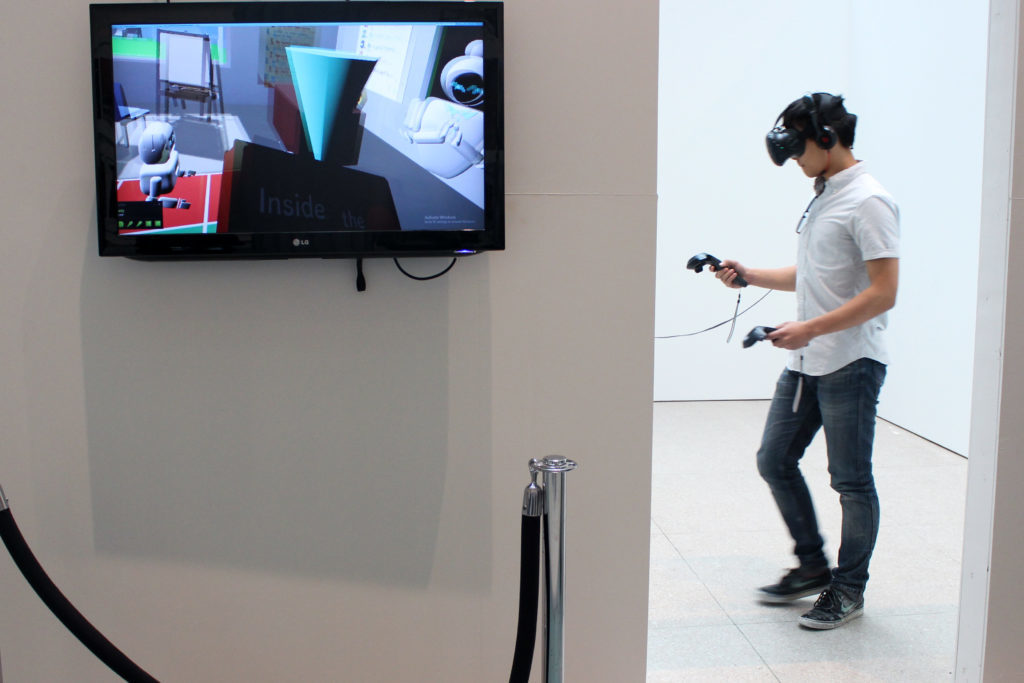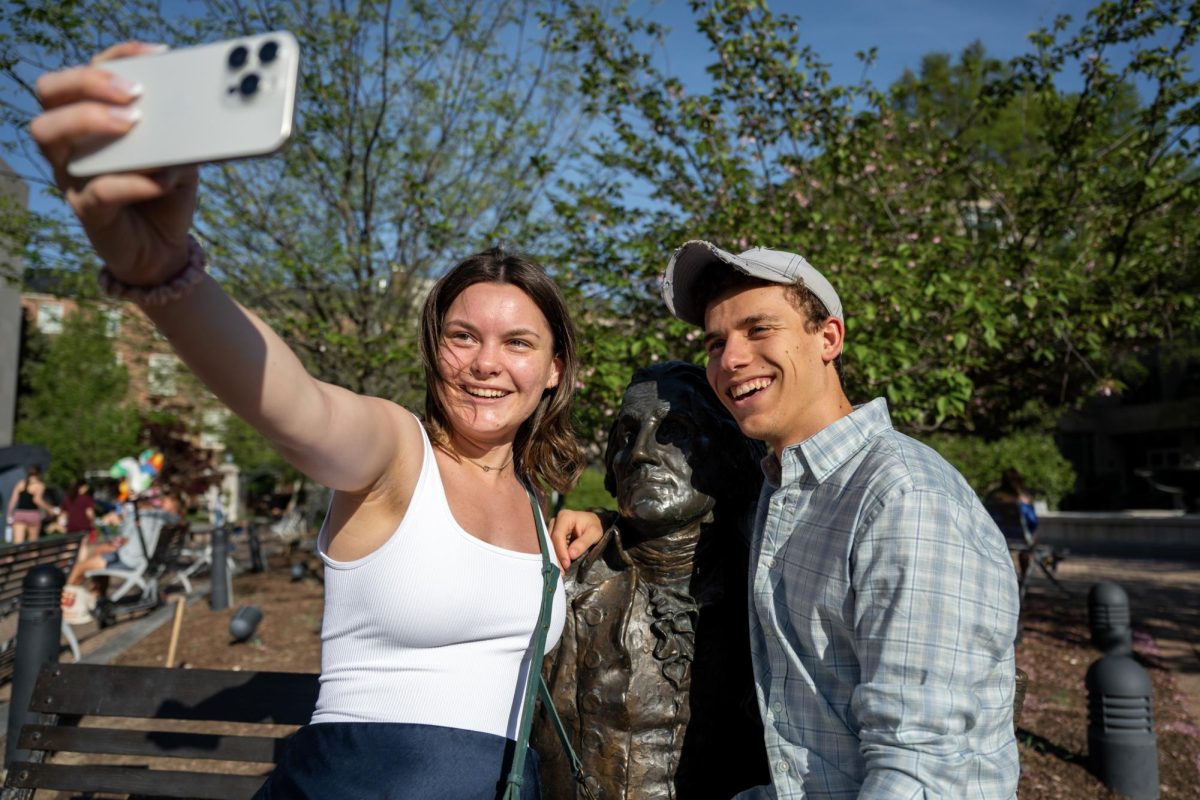On the first day of elementary school, students arrive clutching their backpacks and shaking with nerves. They are then often asked to write their name on the board and say a few things about themselves. Although this may seem unthreatening, it can be debilitating for children with autism and social anxiety.
Jack Mead, a 23-year-old digital media design undergraduate student at the Corcoran School of the Arts and Design, created a virtual reality program in which players complete tasks, like those students must complete on the first day of school, to help children with anxiety and autism communicate. Mead’s project, titled Spectrum, is now being presented at NEXT, the Corcoran School’s senior thesis exhibit that includes student-produced digital art, paintings and sculptures.
The exhibition opened last week and will remain open until May 21, according to the Corcoran’s website, with thesis presentations given April 12, May 5 and May 6.
Spectrum is a virtual reality simulation that recreates the anxious environment of a classroom as a form of mental health treatment for children that have social anxiety. In the simulation, players get to experience life as a new student on the first day of school and must complete tasks children might struggle with, like choosing a partner for a project or talking about themselves.
Mead said his intention was to create a program that could be used in children’s counseling to make sessions more engaging. Children can overcome fears of anxiety in the safe environment of virtual reality without feeling like they are in therapy.
“You kind of lose yourself in it and become absorbed into the game,” he said.
Mead said the program could have helped him deal with the severe social anxiety he has had since childhood. After attending eight schools in three different countries, Mead’s difficulty with introductions at school became the inspiration for Spectrum.
The game’s objects and colors are crisp and bright, and the teacher and students are designed as robots to be expressive and unthreatening, he said.
Spectrum is unfinished, but Mead said he is interested in further developing it and is currently “talking to different people,” like experts on autism and psychology, to make sure it works for children.
As an art student, Mead said he had no programming knowledge prior to experimenting with virtual reality through this project, but he attended virtual reality talks where he realized that he could use this program as an artistic medium.
Mead said he found a partner in his friend Albert Tang, a University of Maryland student majoring in computer science, in February after consulting with him for programming pointers.
Tang said that he became “immediately hooked” on the immersive aspect of virtual reality when he tried out the headset.
“It really felt like I was a kid again playing video games for the very first time,” Tang said.
Tang said that they spent two nights a week for two months at Mead’s house developing the game and “pulling lots of all-nighters.”
At the exhibit last week, Tang demonstrated the program and spectators viewed secondhand what he saw in the headset on a TV monitor.
The objectives in Spectrum become increasingly more difficult just as they would in a traditional video game, Tang said. He said that tasks like making new friends, a “bully bot” simulation and conflict resolution are planned for future iterations of the program.
Matt Guastaferro, Mead’s adviser and an adjunct professor of design, said he was impressed with Mead’s work interviewing experts in virtual reality and psychology to prepare for his project.
“I think Jack has done a really awesome job with something that has potential to have a huge impact on society,” he said.




